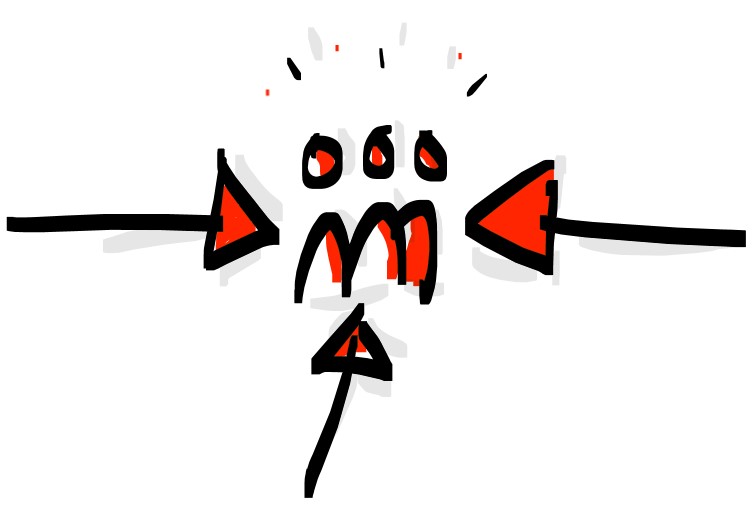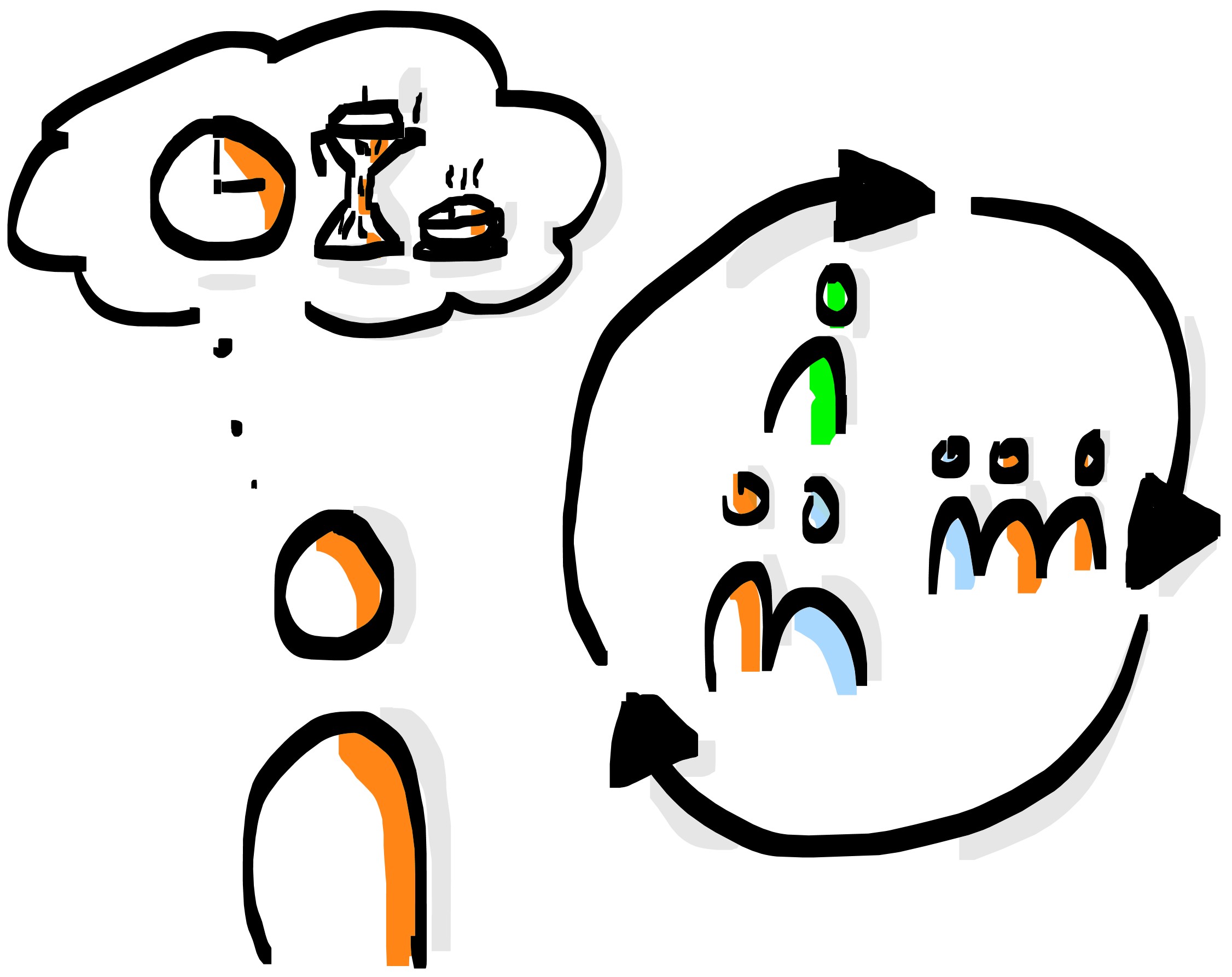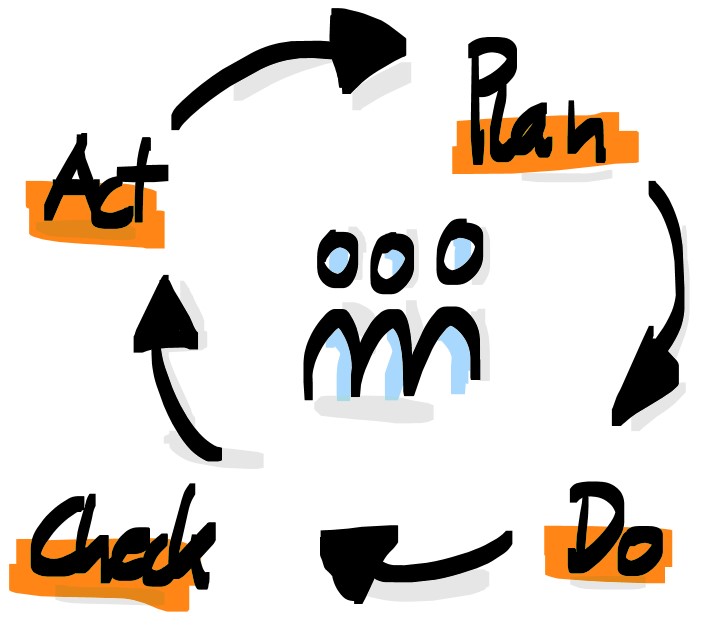Bad news for people who like it calm and constant. So for ALL (healthy) people: Nothing is as constant as change! This trivial fact is especially true today. So let’s practice radical acceptance in particular and thus acquire the necessary tools. What does it take for successful work of change?
Change Agents of all kinds
e.g. entrepreneurs, managers, project managers and scrum masters, in short: everyone who has a lot to do with change and change management, may occasionally doubt it. Nevertheless: Basically it is possible to change yourself and other people. That is the good news.
The less good news is that (successful) change requires preconditions that are not always given and that, as experience shows, are even less often known. This is true for changes of individuals as well as for changes in and of groups of people. So e.g. of teams, departments, divisions, companies, industries, societies….
What is great about both is that they can be put in place relatively quickly. Because preconditions can be created – if you know what they are. And strictly speaking, exactly THAT is the job of change agents. So let’s stop complaining and get started:
Basic requirements for change
1. Personality/personal competence and willingness to change
It may seem trivial, yet in our obsessive, conformist world, it is often overlooked that people have temperaments, experiences, and preferences. The same is true for groups of people and entire companies.
That’s why some people are fundamentally more open to change than other people. (Which does NOT make them better people!) Anyone seeking change should ALWAYS be aware of this supposedly trivial fact and, above all, take it into account in their preparations. Therefore, it is best that he/she obtains a – defined – overview as accurate as possible in preliminary stages:
- How do I, do we, do the people and also the organization, which are to change, face changes in PRINCIPLE?
- Am I, are we, is the organization fundamentally rather cautious, fearful or biased toward stability?
- Or yet also a bit adventurous and rather entrepreneurial oriented with a desire to discover?
- How much experience do people have in transformation projects?
- What basic competencies are available when it comes to change?
- How much enthusiasm and/or fears or resistance is to be expected? Where and from whom?
This is the only way you can manage approach, expectations and motivations in a targeted manner.

2. Suffering/feeling of urgency AND importance
Yes. It often looks different. Yet humans are (somehow) rational beings. Meaning: humans do things when they are reasonable. However, reason is – and neurobiology and psychology agree on this – NOT a universally valid, objective, and especially NOT a cognitive category:
Reason is just NOT a matter for the HEAD, at least not for it alone. But BEFORE ALL, it is an EMOTIONAL, a gut thing. And worse, each head-belly unit is different!
But what each person has in common, is that they ALWAYS optimize their own balance of energy. This leads to the fact that people ask themselves WITH EVERYTHING they do: DO I, DO WE REALLY HAVE TO DO THIS NOW? Is this so important now? Is it that urgent right now? So that I/we NOW get active and invest time and energy?
Only when these highly individual questions get good answers, i.e. real EMOTIONAL reasons for movement are present, people will start moving.
 Important
Important
Oftentimes it is said that people only take action when “the pressure of suffering is high” enough. So, for example, unpleasant things have to be avoided. Or to prevent a danger or a suffering, which could affect them personally (the cozy movie night!) or their social group (e.g. their project team: “The project goal is at risk”).
However, this line of thinking could (and often enough does) lead people to believe that for change to occur, it is even essential to increase the pressure of suffering. Just then people would change. I think such measures are useless and dangerous and counterproductive. People can be demonstrated urgency and importance WITHOUT inflicting suffering on them with coercive measures.

3. Reward Expectation (What’s in it for me?)
Even when people have realized that it is urgent and important to act, they still ask themselves the question beforehand: What’s in it for me to make the change?
This is a little different from the question of general suffering discussed above.This is about people answering the question of what the change means to them most personally. They do this to decide how much they will commit to overcoming the routines that need to be modified and to change. Neurobiologist and psychologist Gerhard Roth writes in this regard:
“A sufficient level of reward is necessary, in any case, to overcome habits that stand in the way of change.”
This is also an important insight for change agents. Especially in conjunction with the realization that this also requires highly individualized responses, especially those that people give themselves and cannot come from management or elsewhere. (Which is not to say that you can”t influence from the outside.)

4. Long breath and patience
Change means shifting thinking and trading routines. In neurobiological – and also organizational – terms, this does NOT mean REPROGRAMMING patterns of thought and action in any way in the course of the change project. Rather, the OLD patterns are OVERLAID with NEW patterns
.
This makes a very important difference, especially with regard to planning a change project. Because it is the reason why people tend to NOT follow the new patterns, but rather to fall back into the old patterns. New and old patterns are in fact in (emotional) ” competition of reason”.
And because people strive for psychological and physical safety in everything they do, and simply want to feel good about what they are doing, old patterns have a big advantage here.
Because they are “tried and true” for success. People simply know what to expect when they use them. This is not the case with new routines, because they have not yet been able to prove their value so often in everyday life. So they are less considered – especially in tense, more stressful periods: After all, better safe than sorry.
It is important to realize that this is an archaic human pattern. In other words: A very very old automatism.
Also, it’s important to acknowledge that this is NOT intentional. Especially not an evil one. If anything, it is done with the best of intentions.
Because in the light of day, it is actually very smart to trust in the tried and true, even if it is admittedly the exact opposite of the desired effect in the change project. We do want to change things, after all. Actually.
This is why
change takes time and CAN’T happen overnight. People need time to establish and practice the new ways of doing things. With all the mistakes and setbacks that entails.
And because the things are what they are, and people tend to have tunnel vision, it is important to have external support that points out mistakes and helps to correct them. At the very least, however, it must be ensured that people learn to check themselves and act again in the desired direction.

 If we keep these four requirements in mind
If we keep these four requirements in mind
change can succeed. This is because we are ALWAYS dealing with individual personalities who have an interest in achieving success together. Those, however, have to fit the basic individual goals. This requires the desire to find out what that means in detail. So a benevolent, positive, motivating and appreciative interaction with each other.


 If we keep these four requirements in mind
If we keep these four requirements in mind